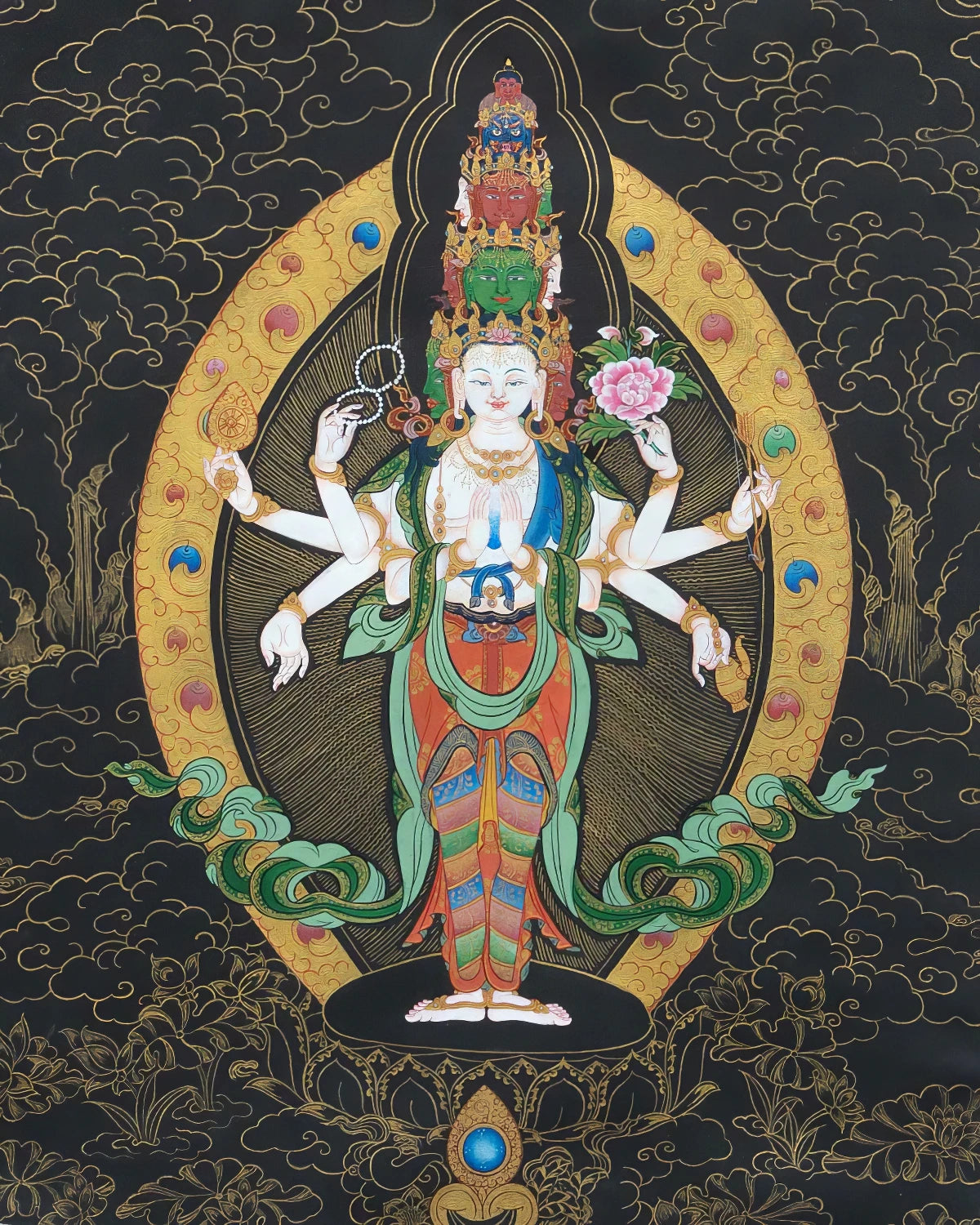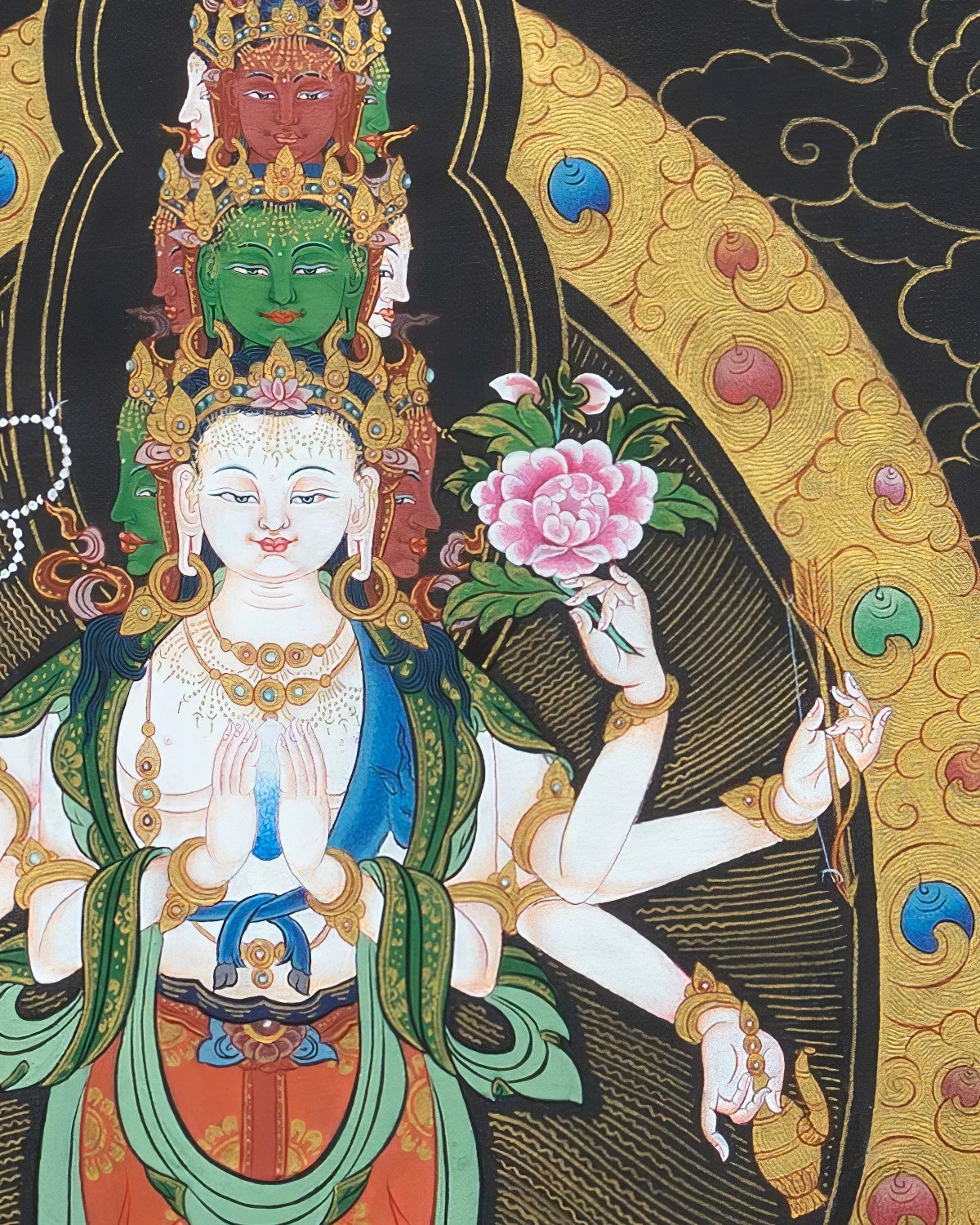


Eleven-Headed Avalokiteshvara
Avalokiteshvara is the personification of all the compassion experienced by beings, both enlightened and those striving for enlightenment. According to Buddhist mythology, this particular form of Avalokiteshvara emanated when a more primordial form – the four-armed Avalokiteshvara – swore a pledge that he would dedicate his entire existence to guiding beings from the paths of delusion. So intense was his motivation that he wished for his head to split into a thousand pieces if his striving waned in the least. As time passed however, he came to realize the depth to which beings were overcome by ignorance, and the enormity of the task he had himself sworn to dampened his great zeal. At that very moment, his head to split into a thousand pieces in accordance with his own prayer. Out of compassion, Buddha Amitabha brought him back to life, giving him eleven new heads.
Although the eleven-headed Avalokiteshvara commonly appears with a thousand arms, legs, and eyes, this is a simpler manifestation in which he has only six arms and two eyes. This particular form of Avalokiteshvara first manifested to Emperor Songtsen Gampo, the first great patron of Buddhism in Tibet, in a vision while he was engaged in a retreat in the region of Pabhonka. On the basis of this vision he commissioned the first statue of the six-armed Avalokiteshvara. Known generally as the eleven headed Avalokiteshvara, the number, forms and hues of his eleven heads are identical to the thousand-armed Avalokiteshvara, among which ten are peaceful and one wrathful. In his three right arms he bears a lotus, a bow, and a vase. In two of his left arms he bears a white rosary and a ritual ornament.
The thangka comes framed in a traditional silk brocade border.
Craftsmanship
Choose options




